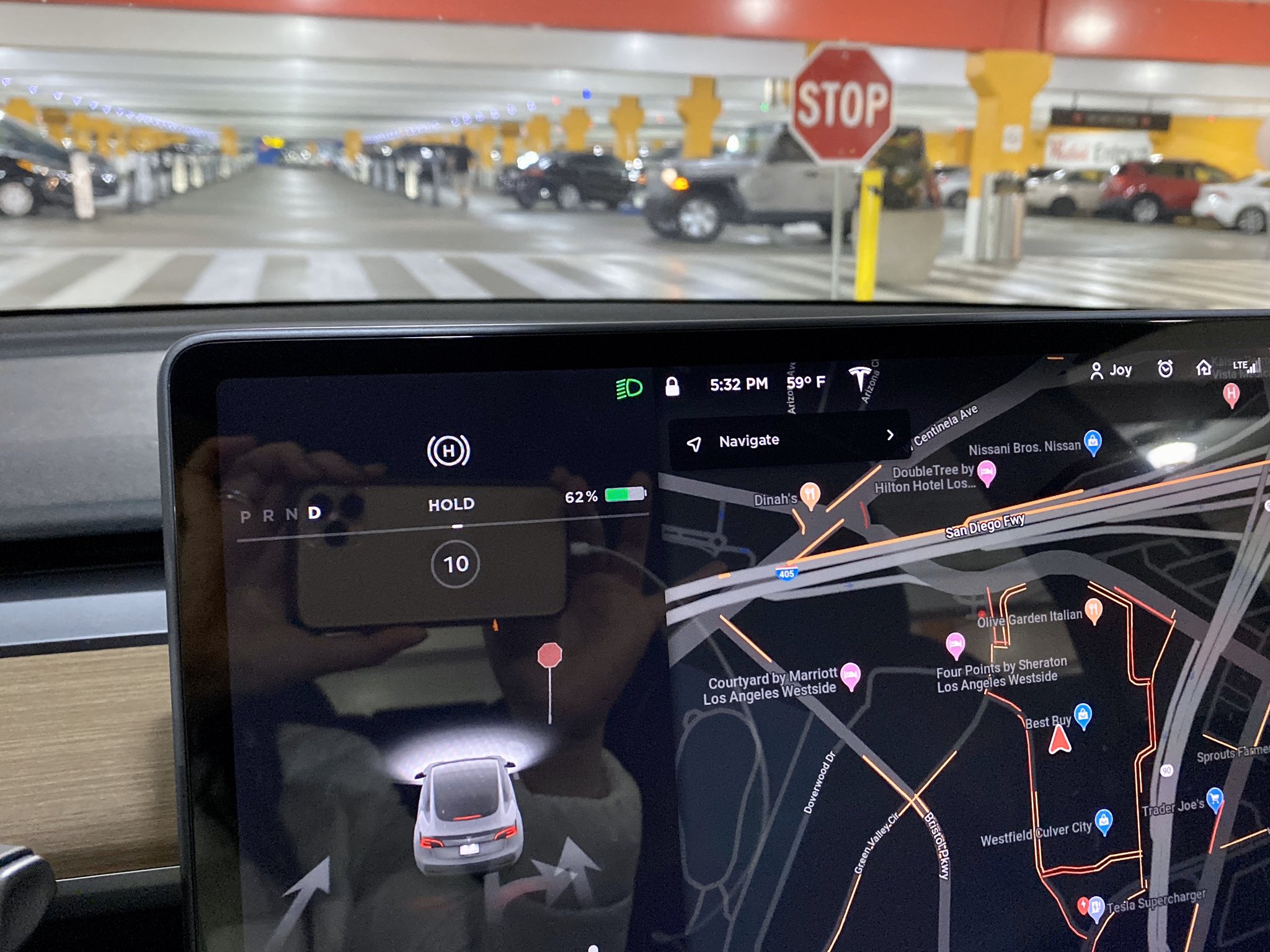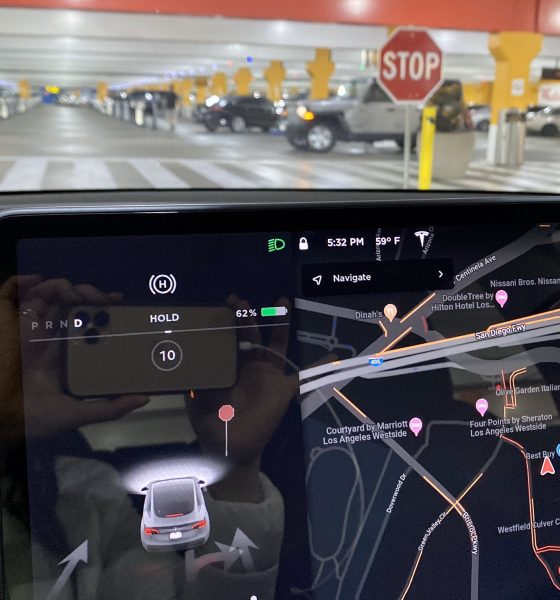It appears that Tesla is getting faster with its Hardware 3 retrofits, with recent reports from the electric car community suggesting that the upgrade could now take as short as a few hours. This suggests a notable improvement in the turnaround times for HW3 upgrades, especially since previous anecdotes from Tesla owners indicated that the process could take as long as a few days.
Elon Musk has noted that Hardware 3 retrofits will be available for electric cars equipped with HW2 and HW2.5, and whose owners purchased the company’s Full Self-Driving suite. The CEO has also mentioned in the past that retrofits should not take too long, and that Tesla’s mobile service fleet should be able to accomplish the upgrade without any difficulties.
Initial accounts of Hardware 3 retrofits suggested that this was indeed the case. A Tesla Model X P100D owner who runs the Electric Dreams YouTube channel reported back in December that his HW3 retrofit only took a few hours, thanks to a member of Tesla’s Mobile Service team coming over to his home to perform the upgrade. In the case of the Model X owner, the mobile service technician started the retrofit in the morning and completed the upgrade by night.
As Tesla started ramping its Hardware 3 retrofits, it quickly became evident that not all owners will experience the same convenience as related by the Electric Dreams host. Tesla Model 3 owner and enthusiast Tesla Joy, for example, noted that her vehicle’s upgrade ended up taking over five days. This was highly inconvenient, particularly as it resulted in the Model 3 being stuck in the Service Center during New Year’s.
Similar complaints from fellow Model 3 owners suggested that Joy’s experience was not an isolated case. Fellow Model 3 owner Greg Wester, for one, claimed that his Service Center advised him that his HW3 retrofit will take a whole week to complete because of the “disassembly and troubleshooting” that will be involved. Similar to Joy, Wester was given Uber vouchers due to the absence of loaner vehicles.
More recent reports from Tesla owners suggest that Hardware 3 retrofits are now far quicker and more efficient. Tesla owner-enthusiast Tesla Raj recently shared that his Model 3, which was dropped off at a Service Center at 8:30 am, will be fully upgraded by 3:30 pm on the same day. Other Tesla owners commenting on Raj’s tweet shared similar stories, with some stating that their retrofits were also completed within the same day. Even vehicles that had to be left overnight for the retrofit were ready to get back on the road the following day.
Overall, it appears that Tesla is now at a point where its HW3 retrofit process is getting quicker turnaround times. Recent anecdotes from electric car enthusiast @stillstainless noted that the Tesla Lynnwood WA Service Center was actually able to complete a HW3 upgrade in just 2 hours 20 minutes. During this time, the vehicle’s owner reportedly just opted to wait, instead of acquiring a loaner vehicle.
Elon Musk has suggesting in the past that the HW3 retrofit will be a quick, simple process that could be performed by mobile service technicians without any issue. Based on the most recent reports from the Tesla community, it appears that the electric car maker is getting closer to Elon Musk’s estimates. This bodes well for Tesla’s push into the autonomous driving market, especially since Hardware 3 is an important part of the full self-driving puzzle that the company is trying to solve.

News
Tesla starts showing how FSD will change lives in Europe
Local officials tested the system on narrow country roads and were impressed by FSD’s smooth, human-like driving, with some calling the service a game-changer for everyday life in areas that are far from urban centers.

Tesla has launched Europe’s first public shuttle service using Full Self-Driving (Supervised) in the rural Eifelkreis Bitburg-Prüm region of Germany, demonstrating how the technology can restore independence and mobility for people who struggle with limited transport options.
Local officials tested the system on narrow country roads and were impressed by FSD’s smooth, human-like driving, with some calling the service a game-changer for everyday life in areas that are far from urban centers.
Officials see real impact on rural residents
Arzfeld Mayor Johannes Kuhl and District Administrator Andreas Kruppert personally tested the Tesla shuttle service. This allowed them to see just how well FSD navigated winding lanes and rural roads confidently. Kruppert said, “Autonomous driving sounds like science fiction to many, but we simply see here that it works totally well in rural regions too.” Kuhl, for his part, also noted that FSD “feels like a very experienced driver.”
The pilot complements the area’s “Citizen Bus” program, which provides on-demand rides for elderly residents who can no longer drive themselves. Tesla Europe shared a video of a demonstration of the service, highlighting how FSD gives people their freedom back, even in places where public transport is not as prevalent.
What the Ministry for Economic Affairs and Transport says
Rhineland-Palatinate’s Minister Daniela Schmitt supported the project, praising the collaboration that made this “first of its kind in Europe” possible. As per the ministry, the rural rollout for the service shows FSD’s potential beyond major cities, and it delivers tangible benefits like grocery runs, doctor visits, and social connections for isolated residents.
“Reliable and flexible mobility is especially vital in rural areas. With the launch of a shuttle service using self-driving vehicles (FSD supervised) by Tesla in the Eifelkreis Bitburg-Prüm, an innovative pilot project is now getting underway that complements local community bus services. It is the first project of its kind in Europe.
“The result is a real gain for rural mobility: greater accessibility, more flexibility and tangible benefits for everyday life. A strong signal for innovation, cooperation and future-oriented mobility beyond urban centers,” the ministry wrote in a LinkedIn post.
News
Tesla China quietly posts Robotaxi-related job listing
Tesla China is currently seeking a Low Voltage Electrical Engineer to work on circuit board design for the company’s autonomous vehicles.

Tesla has posted a new job listing in Shanghai explicitly tied to its Robotaxi program, fueling speculation that the company is preparing to launch its dedicated autonomous ride-hailing service in China.
As noted in the listing, Tesla China is currently seeking a Low Voltage Electrical Engineer to work on circuit board design for the company’s autonomous vehicles.
Robotaxi-specific role
The listing, which was shared on social media platform X by industry watcher @tslaming, suggested that Tesla China is looking to fill the role urgently. The job listing itself specifically mentions that the person hired for the role will be working on the Low Voltage Hardware team, which would design the circuit boards that would serve as the nervous system of the Robotaxi.
Key tasks for the role, as indicated in the job listing, include collaboration with PCB layout, firmware, mechanical, program management, and validation teams, among other responsibilities. The role is based in Shanghai.
China Robotaxi launch
China represents a massive potential market for robotaxis, with its dense urban centers and supportive policies in select cities. Tesla has limited permission to roll out FSD in the country, though despite this, its vehicles have been hailed as among the best in the market when it comes to autonomous features. So far, at least, it appears that China supports Tesla’s FSD and Robotaxi rollout.
This was hinted at in November, when Tesla brought the Cybercab to the 8th China International Import Expo (CIIE) in Shanghai, marking the first time that the autonomous two-seater was brought to the Asia-Pacific region. The vehicle, despite not having a release date in China, received a significant amount of interest among the event’s attendees.
Elon Musk
Elon Musk and Tesla AI Director share insights after empty driver seat Robotaxi rides
The executives’ unoccupied tests hint at the rapid progress of Tesla’s unsupervised Robotaxi efforts.

Tesla CEO Elon Musk and AI Director Ashok Elluswamy celebrated Christmas Eve by sharing personal experiences with Robotaxi vehicles that had no safety monitor or occupant in the driver’s seat. Musk described the system’s “perfect driving” around Austin, while Elluswamy posted video from the back seat, calling it “an amazing experience.”
The executives’ unoccupied tests hint at the rapid progress of Tesla’s unsupervised Robotaxi efforts.
Elon and Ashok’s firsthand Robotaxi insights
Prior to Musk and the Tesla AI Director’s posts, sightings of unmanned Teslas navigating public roads were widely shared on social media. One such vehicle was spotted in Austin, Texas, which Elon Musk acknowleged by stating that “Testing is underway with no occupants in the car.”
Based on his Christmas Eve post, Musk seemed to have tested an unmanned Tesla himself. “A Tesla with no safety monitor in the car and me sitting in the passenger seat took me all around Austin on Sunday with perfect driving,” Musk wrote in his post.
Elluswamy responded with a 2-minute video showing himself in the rear of an unmanned Tesla. The video featured the vehicle’s empty front seats, as well as its smooth handling through real-world traffic. He captioned his video with the words, “It’s an amazing experience!”
Towards Unsupervised operations
During an xAI Hackathon earlier this month, Elon Musk mentioned that Tesla owed be removing Safety Monitors from its Robotaxis in Austin in just three weeks. “Unsupervised is pretty much solved at this point. So there will be Tesla Robotaxis operating in Austin with no one in them. Not even anyone in the passenger seat in about three weeks,” he said. Musk echoed similar estimates at the 2025 Annual Shareholder Meeting and the Q3 2025 earnings call.
Considering the insights that were posted Musk and Elluswamy, it does appear that Tesla is working hard towards operating its Robotaxis with no safety monitors. This is quite impressive considering that the service was launched just earlier this year.










